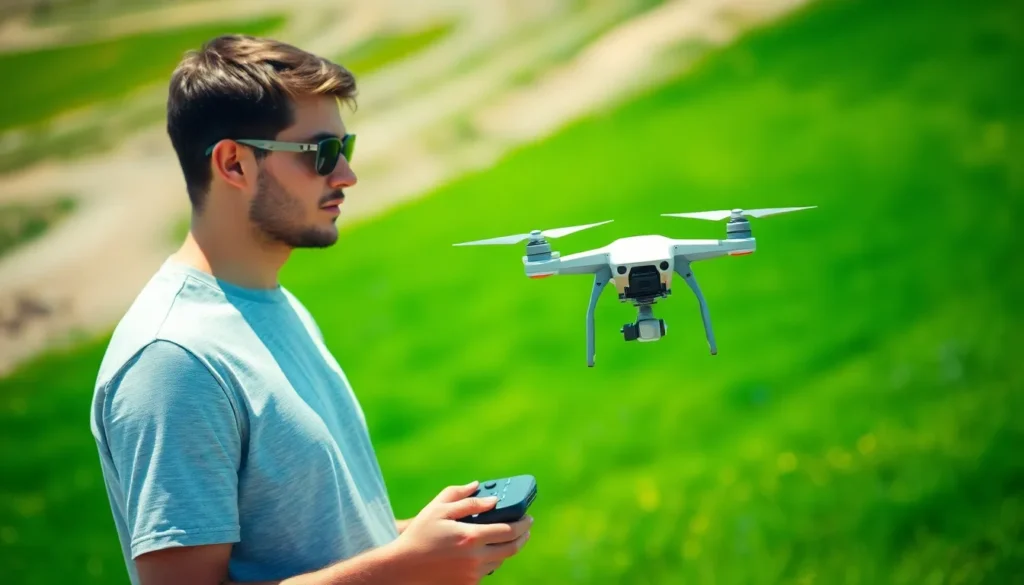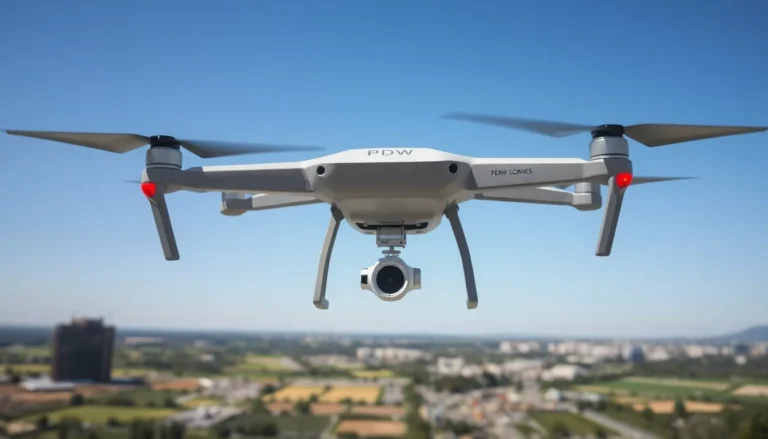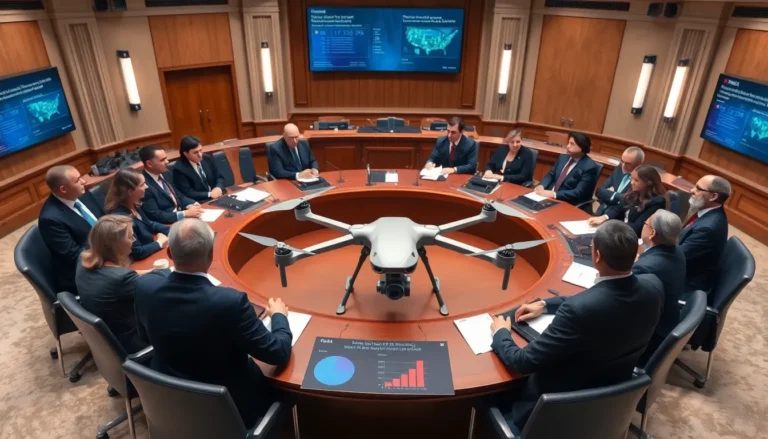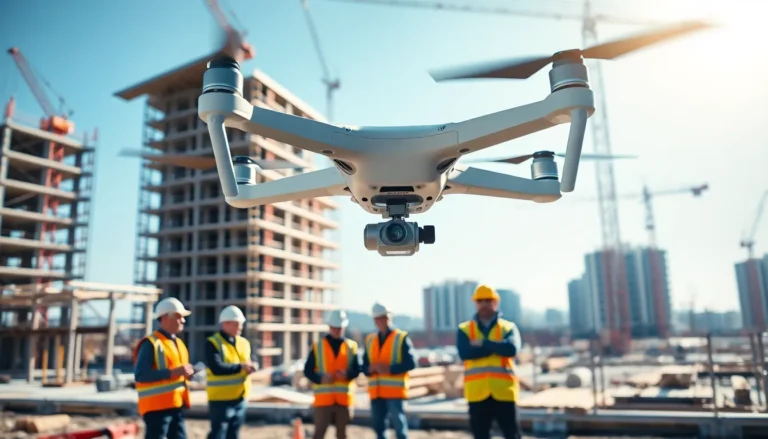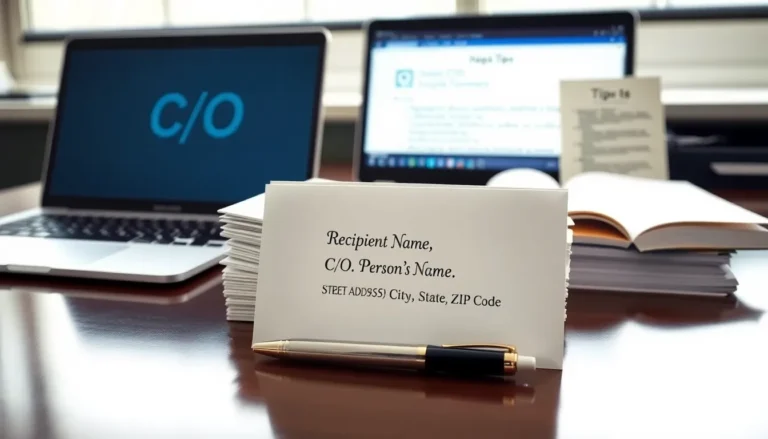In recent years, drones have transformed industries ranging from photography to agriculture, captivating enthusiasts and professionals alike. One critical factor that often determines a drone’s effectiveness is its flight time. Understanding how long a drone can stay airborne not only influences purchasing decisions but also impacts the success of various applications.
Flight time can vary significantly based on several elements, including battery capacity, drone type, and environmental conditions. As technology advances, manufacturers are continuously striving to enhance battery life and overall performance. This article delves into the intricacies of drone flight time, exploring what affects it and how users can maximize their aerial adventures. Whether you’re a hobbyist or a commercial operator, knowing the ins and outs of flight time is essential for getting the most out of your drone experience.
Table of Contents
ToggleUnderstanding Drone Flight Time
Drone flight time refers to the duration a drone can stay airborne on a single battery charge. Several factors impact this key performance metric.
Battery Capacity
Battery capacity, measured in milliamp hours (mAh), significantly affects flight time. Higher-capacity batteries often provide longer operational periods. For example, a drone with a 5,000 mAh battery typically achieves flight times ranging from 25 to 30 minutes, while a 1,500 mAh battery usually supports only 10 to 15 minutes.
Drone Type
The type of drone plays a crucial role in determining flight time. Multirotor drones, like quadcopters, often experience shorter flight durations due to their design and weight. Fixed-wing drones, known for their efficiency, can fly for over an hour on a single charge. The specific model choices, like consumer versus professional-grade drones, also contribute to varying flight times.
Payload Weight
Payload weight directly impacts flight duration. Adding equipment, such as cameras or sensors, increases overall weight, which may reduce flight times. For instance, a drone designed for 30 minutes of flight time might only achieve 20 minutes when carrying a heavy payload.
Environmental Conditions
Environmental conditions, such as wind speed and temperature, also influence flight time. Strong winds can cause increased battery consumption as drones work harder to maintain stability. Similarly, cold temperatures can reduce battery efficiency, leading to shorter flight durations.
Flight Mode
Flight mode affects energy consumption. Using aggressive flying styles, such as rapid ascent or aerial maneuvers, drains the battery more quickly compared to gentle flying. Operating in a stable hover or at lower speeds typically conserves battery life, extending flight time.
Future Innovations
As technology evolves, manufacturers focus on developing batteries with improved energy densities and longevity. Upcoming advancements like solar-assisted drones or fuel-cell technology could significantly increase flight times, enhancing drone capabilities across various sectors.
Understanding these factors provides valuable insights for drone users. Knowing how to optimize setup and operation helps achieve maximum flight durations, catering effectively to specific needs.
Factors Affecting Drone Flight Time
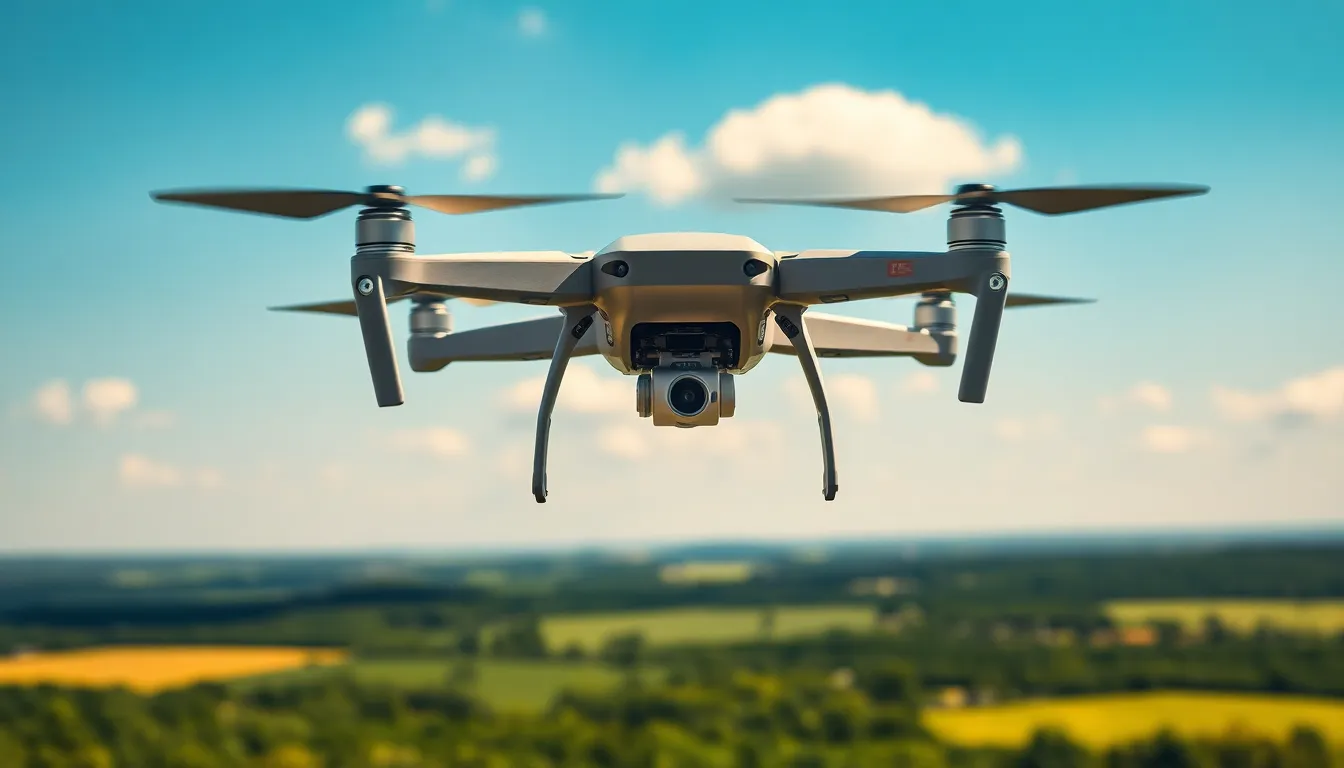
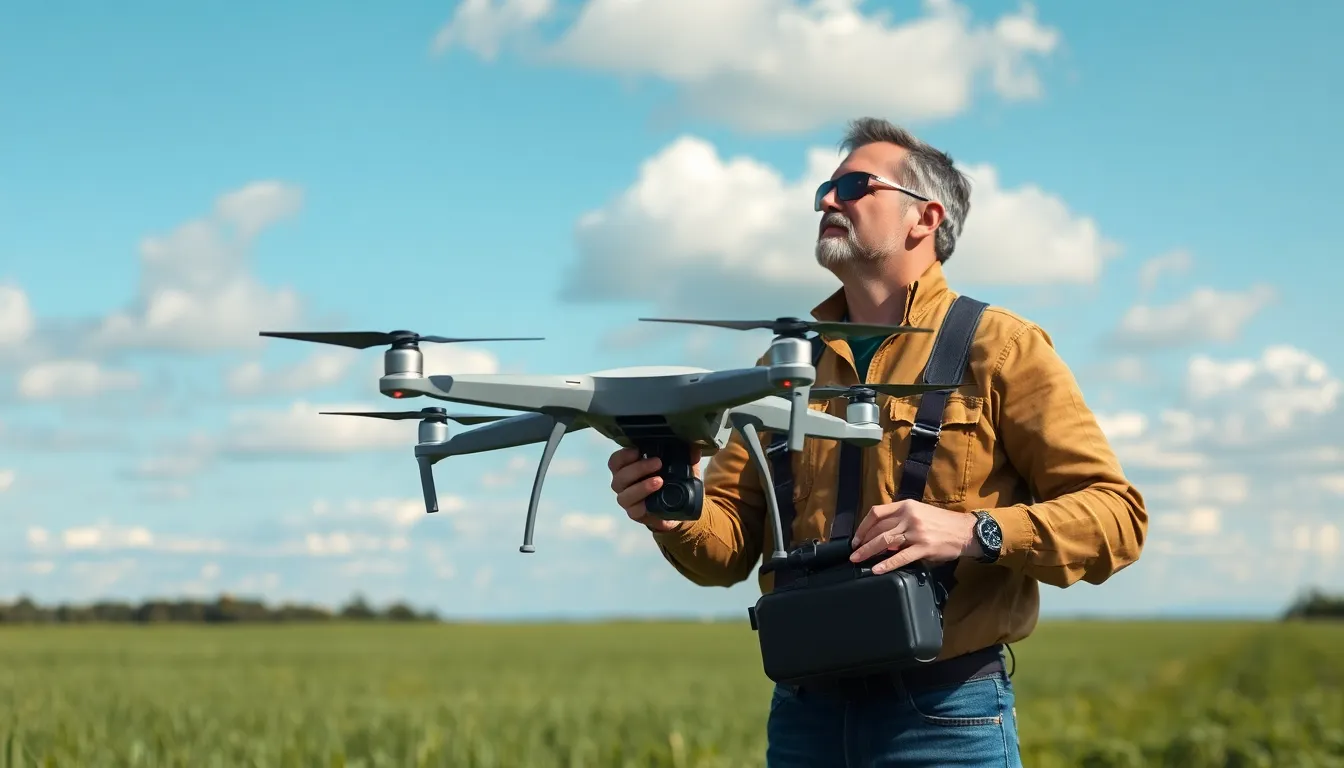
Multiple elements influence the flight time of drones, determining how long they can stay airborne. Understanding these components aids users in selecting drones that best suit their needs.
Battery Capacity
Battery capacity directly impacts a drone’s flight time. Measured in milliamp hours (mAh), higher-capacity batteries enable longer flights. For example, a drone with a 5000 mAh battery can typically achieve up to 25 minutes of flight, while one with a 2200 mAh battery may only last around 12 minutes. Efficient battery design and energy management systems also contribute to extending flight duration.
Weight of the Drone
The weight of the drone significantly affects its aerial performance. Heavier drones require more energy to lift off and maintain altitude. Additional payloads, such as cameras or sensors, further decrease flight time. A multirotor drone weighing 1.5 kg may fly for only 15 minutes when carrying a 500 g payload, whereas the same drone without extra weight might achieve 25 minutes of flight.
Weather Conditions
Weather conditions play a crucial role in determining flight time. Winds can create additional resistance, requiring the drone’s motors to draw more power. For instance, a strong headwind can cut flight time by up to 30%. Temperature also impacts battery efficiency; colder conditions lead to reduced battery performance. Operators should check weather forecasts to optimize flight plans and ensure the best possible flight times.
Measuring Drone Flight Time
Measuring drone flight time involves assessing how long a drone can operate on a single battery charge under varied conditions. This measurement is essential for both enthusiasts and professionals to maximize efficiency.
Testing Procedures
Testing drone flight time requires a standardized approach to ensure accuracy. Common procedures include:
- Controlled Environments: Conduct tests in calm conditions with minimal wind to isolate battery performance.
- Baseline Metrics: Start with fully charged batteries and ensure the drone is at a consistent weight, typically without additional payloads.
- Multiple Trials: Perform several test flights for each setup to gather reliable data, ensuring that the average flight time reflects true performance.
- Recording Tools: Use flight log applications or onboard telemetry systems to track flight duration precisely, capturing data like altitude and speed.
Real-world Scenarios
Understanding flight time in real-world settings highlights the influence of various factors on drone performance. Key scenarios include:
- Payload Impacts: In photography, adding a camera alters flight time; heavier equipment significantly reduces operational durations.
- Weather Variability: Operating in windy conditions can cut flight time substantially; for instance, drones may experience a 20-30% reduction when battling strong gusts.
- Flight Styles: Aggressive maneuvers, such as rapid ascents and sharp turns, consume battery life more quickly compared to stable, cruising flight paths.
- Terrain Challenges: Flying in rugged areas or high elevations typically requires more power, impacting overall flight time.
Measuring flight time accurately through testing and observing real-world applications provides insights into optimizing drone operations across different activities and conditions.
Improving Drone Flight Time
Enhancing drone flight time involves multiple strategies focused on battery performance and weight management. Implementing these techniques leads to longer operational periods and increased efficiency.
Battery Upgrades
Upgrading batteries significantly boosts drone flight time. Newer lithium polymer (LiPo) and lithium-ion options offer higher energy densities, which translates to increased capacity without adding substantial weight. For example, a drone equipped with a 6000 mAh LiPo battery can achieve up to 30 minutes of flight versus a standard 2200 mAh option, which typically provides around 12 minutes. Additionally, smart battery technologies enhance monitoring and charge management, optimizing energy usage during flights. Manufacturers are continually developing batteries with improved discharge rates, allowing drones to sustain longer durations even under heavy workloads.
Weight Reduction Techniques
Reducing overall weight is crucial for maximizing flight time. Operators can employ several strategies, including using lightweight materials such as carbon fiber or advanced plastics. These materials maintain structural integrity while minimizing mass. Furthermore, optimizing the design of drone components, such as propellers and frames, can lead to significant weight savings. Implementing efficiency-focused design principles not only reduces weight but also enhances aerodynamic performance. Minimizing additional payload, such as unnecessary accessories, also contributes to extended flight durations. Overall, a holistic approach to weight management directly influences a drone’s operational efficiency and longevity in the air.
Understanding drone flight time is essential for maximizing efficiency and effectiveness in various applications. By considering factors like battery capacity and environmental conditions, operators can make informed decisions to enhance their drone experience.
Investing in advanced battery technologies and lightweight materials can lead to significant improvements in flight duration. As the industry continues to innovate, staying updated on these advancements will empower users to optimize their drones for longer and more reliable flights.
Ultimately, a strategic approach to managing flight time not only enhances performance but also ensures that drones can meet the demands of their specific tasks with confidence.

